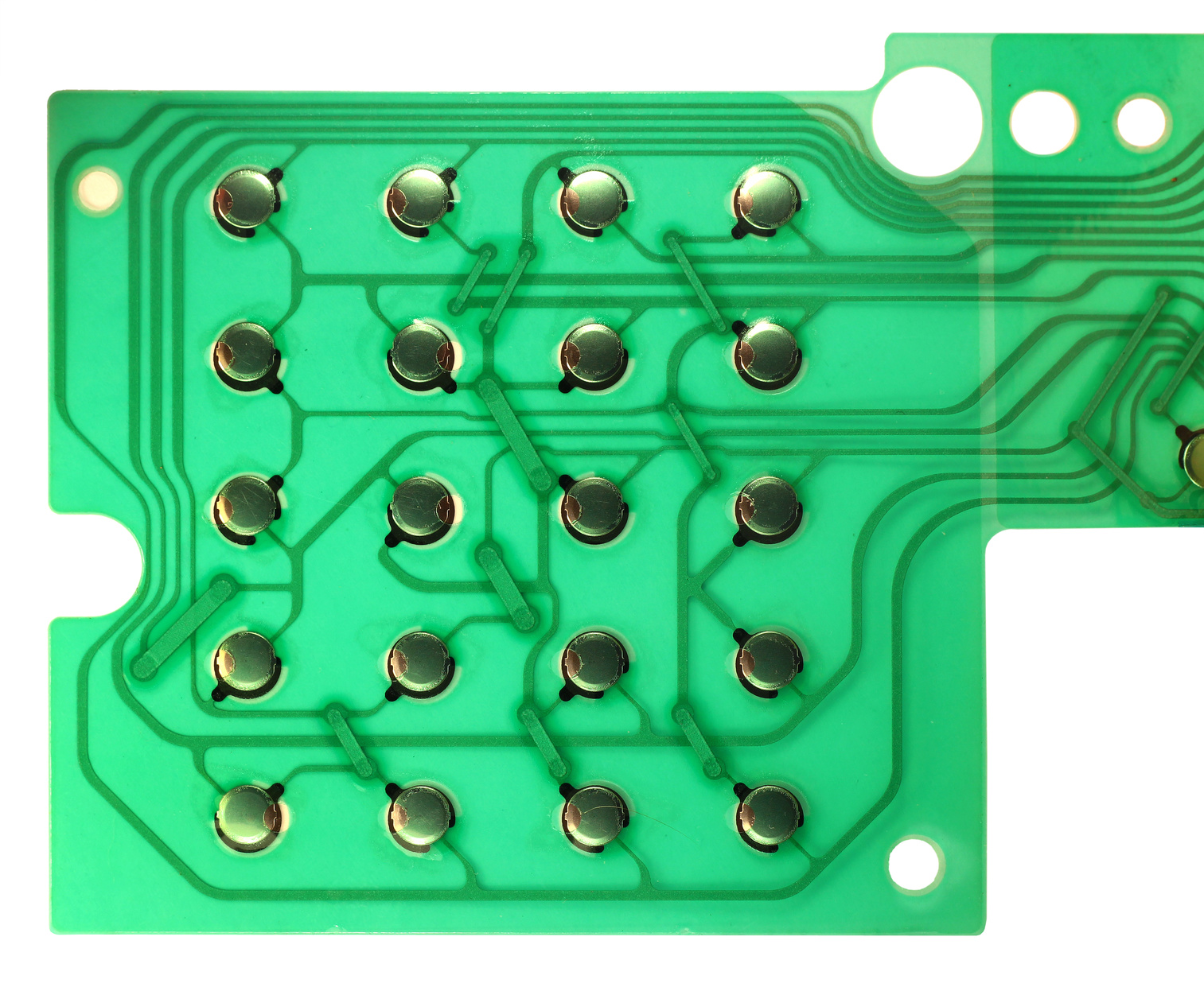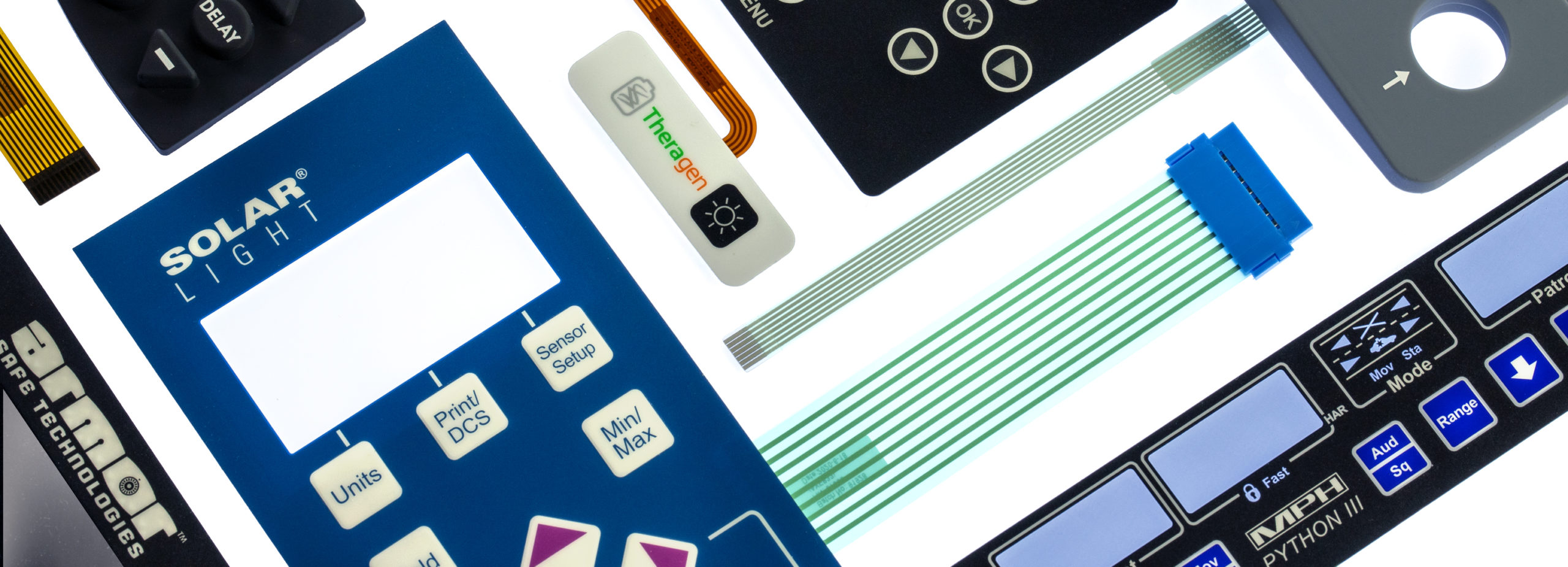A good membrane switch manufacturer offers adaptable design options for unique applications.
Everything About Membrane Layer Switch Over: Comprehending Its Design and Functionality
When you think concerning the control interfaces in modern tools, membrane layer switches often come to mind. Allow's explore what collections membrane switches apart from various other control systems.
What Are Membrane Switches?

Their seamless nature makes them easy to tidy and immune to dirt and wetness, an important attribute in many atmospheres. Membrane layer switches can also be tailored relating to form, dimension, and graphics, enabling producers to create unique interfaces tailored to particular items. And also, they're lightweight and thin, which assists in reducing the general mass of tools. Overall, membrane layer buttons play a considerable duty in boosting user experience across a large range of applications.
Just How Membrane Switches Work
When you push a secret on a membrane button, it activates a straightforward yet efficient device. membrane switch manufacturer. The leading layer, typically made of versatile product, presses down onto a conductive layer below it.
You'll see that the responsive responses varies based on the button layout, offering either a soft click or a much more pronounced feedback. Once you launch the key, the membrane go back to its initial setting, resuming the circuit and quiting the signal. This process takes place practically instantly, making sure a responsive user experience.
Membrane switches are preferred as a result of their toughness and resistance to dirt and moisture, making them perfect for various applications, from house appliances to medical tools. Understanding this procedure aids you value their prevalent use.
Secret Components of Membrane Buttons
Understanding the essential parts of membrane buttons is fundamental for realizing their performance and design. The safety layer shields versus environmental factors and use, extending the switch's life-span. By understanding these components, you'll get insight right into how membrane layer switches run and their value in different applications.
Products Used in Membrane Layer Change Layout
The performance and longevity of membrane switches over heavily rely on the materials used in their layout. You typically come across polyester and polycarbonate as main substrates as a result of their exceptional toughness and versatility. These products withstand scrapes and chemicals, making them ideal for demanding environments.
The conductive layers often utilize silver or carbon, selected for their reliability and conductivity. membrane switch manufacturer. Silver provides superior efficiency, while carbon is a cost-effective alternative. For the overlay, you could think about a matte or glossy surface, relying on your visual needs and customer experience
Adhesives play an important duty also; they bond layers securely and guarantee long life. Make specific to select adhesives that stand up to ecological elements like temperature level and humidity. Finally, don't neglect the significance of an excellent printing strategy for graphics, as it improves both capability and visual appeal. Choosing the appropriate products will ensure your membrane layer button stands the examination of time.
Style Factors To Consider for Membrane Layer Buttons
While creating membrane buttons, it's important to take into consideration different elements that influence their capability and user experience. Start by concentrating on the layout and switch dimension; make certain they're intuitive and simple to navigate. Consider the tactile responses you wish to provide-- will users require a visible click or a softer touch? Furthermore, consider the materials you'll utilize, as they'll impact sturdiness and appearances.
Verify your layout accommodates environmental factors, like dampness or temperature level variants, which might impact efficiency. By carefully considering these aspects, you'll produce a membrane button that boosts use and satisfaction.
Applications of Membrane Layer Switches
Membrane buttons are functional parts found in numerous applications, from commercial equipment to consumer electronics. You'll see their effect in equipments that call for durable user interfaces and in gadgets that take advantage of streamlined designs. Understanding these applications helps you value the capability and functionality of membrane layer switches in day-to-day modern technology.
Industrial Equipment Use
When you're looking to enhance the capability of commercial tools, membrane layer buttons supply a trustworthy solution that incorporates sturdiness with user-friendly style. These switches are excellent for rough settings, supplying resistance to dust, dampness, and chemicals. You'll locate them in control panels for making makers, a/c systems, and medical devices, where precision and responsiveness are find essential. Their reduced account means they fit seamlessly right into different equipment, conserving beneficial room while maintaining simplicity of use. With personalized graphics and backlighting choices, you can produce an intuitive user interface for drivers, improving performance and safety. Plus, their long life-span reduces maintenance costs, making them a clever investment for your commercial applications. Embrace membrane switches to improve your procedures and boost total performance.
Consumer Electronic Devices Integration
In the domain name of consumer electronic devices, membrane layer switches play an important function in enhancing navigate here customer interaction and gadget functionality. You'll find them in tools like microwaves, push-button controls, and pc gaming consoles, offering a seamless method to communicate with innovation. Their sleek design permits for easy integration into different products, making controls instinctive and easy to use. With their capability to incorporate graphics and backlighting, you can appreciate a contemporary visual that enhances the device's overall appearance. Membrane layer buttons also ensure sturdiness and resistance to dirt and moisture, prolonging the life expectancy of your electronic devices. By choosing membrane switches, you enhance not just the performance however also the style of your devices, making day-to-day communications smooth and satisfying.
Advantages and Disadvantages of Membrane Layer Buttons
While membrane switches use a variety of advantages, they likewise come with some drawbacks that you need to consider. One significant advantage is their portable style, making them suitable for space-constrained applications.

Membrane switches can have a much shorter life-span contrasted to mechanical switches, particularly under hefty usage. They can also be less tactile, which could impact individual responses throughout operation. Stabilizing these pros and disadvantages will assist you figure out if membrane layer buttons are the right fit for your project.
Often Asked Inquiries
How Much Time Do Membrane Layer Switches Generally Last?
Membrane switches over usually last in between 5 to one decade, depending on usage and environmental problems. You'll wish to examine variables like wear, direct exposure to moisture, and temperature level fluctuations to gauge their longevity successfully.
Can Membrane Changes Be Custom-made for Certain Layouts?
Yes, you can customize membrane layer buttons to fit certain layouts (membrane switch manufacturer). You'll have the freedom to choose shades, shapes, and layouts that match your project's requirements, ensuring they blend perfectly with your overall aesthetic
What Is the Price Range for Membrane Layer Change Production?
The cost array for membrane layer switch production normally drops between $1 and $10 each, depending upon aspects like layout complexity, quantity, and products. You can get quotes from makers to find the finest choice.

Are Membrane Layer Switches Over Water Resistant or Immune?
Membrane layer buttons can be designed to be water resistant or resistant, depending on materials utilized and construction techniques. If you need them for damp environments, guarantee you define those demands throughout the style procedure.
Exactly How Do Membrane Layer Changes Contrast to Typical Buttons?
Membrane switches are typically thinner and a lot more adaptable than traditional switches, offering a streamlined design. They're commonly less complicated to clean and integrate, yet might not give the responsive responses you're utilized to with mechanical options.
Conclusion
